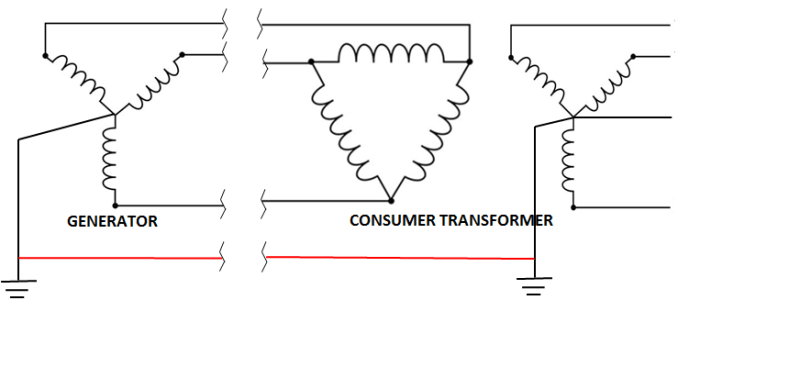noneavailable
Electrical
I'll try this again. Our company installs, operates and maintains semi-permanent 4160V power plants and associated distribution. Attached is a representation of our current power plant configuration. We have been having a couple discussions as it pertains to the concentric neutrals, low impedance path back to source, ground fault tripping and nuisance tripping. I have a couple of the questions below that no one seems to have a good answer they can describe. Mind you we are fairly well trained but don't have a genuine Electrical Engineer degree.
1. Generally speaking within the confines of the power plant all equipment are attached to the same grounding system. There is a debate on whether or not the ground protective devices are compromised to the generators when the concentric neutral on the cables are not connected at both ends. One argument is, considering the plant is small in size and all ground points are tied together on the same grounding system (whether it be a grid or another means) there is still a low impedance path back to source. The counter is because the book says so. I'm sure some say it depends, but overall will the practice of disconnecting one end of the concentric neutral while on same grounding system compromise the ground protection device on the generator.
2. Recently our unit has been asked to power loads that are located relatively close to our power plant (less than a 50 yards away). During the original configuration the concentric neutrals on all power cables were connected to ground. This caused nuisance tripping of our generators 50N devices. Upon disconnecting the concentric neutral at one end the problem was eliminated. Similar to above question. Does disconnecting the concentric neutral in this case from the plant to the load located relatively close compromise the ground fault devices? If the load was some distance away would this again compromise the ground protective device.
3. Some questions have also arisen as how to properly identify our generation and distribution system. None of the transformers have a primary other that 4160Delta. The generator is solidly grounded but can we say it is a 3-phase 3-wire; since we don't use the neutral for transformation. And if a customer asks to provide a 4160/2400 voltage can we supply a neutral with appropriate protection?
I appreciate any help. The manual written for this equipment is as well written as the one for the claymore "face this side toward enemy".
1. Generally speaking within the confines of the power plant all equipment are attached to the same grounding system. There is a debate on whether or not the ground protective devices are compromised to the generators when the concentric neutral on the cables are not connected at both ends. One argument is, considering the plant is small in size and all ground points are tied together on the same grounding system (whether it be a grid or another means) there is still a low impedance path back to source. The counter is because the book says so. I'm sure some say it depends, but overall will the practice of disconnecting one end of the concentric neutral while on same grounding system compromise the ground protection device on the generator.
2. Recently our unit has been asked to power loads that are located relatively close to our power plant (less than a 50 yards away). During the original configuration the concentric neutrals on all power cables were connected to ground. This caused nuisance tripping of our generators 50N devices. Upon disconnecting the concentric neutral at one end the problem was eliminated. Similar to above question. Does disconnecting the concentric neutral in this case from the plant to the load located relatively close compromise the ground fault devices? If the load was some distance away would this again compromise the ground protective device.
3. Some questions have also arisen as how to properly identify our generation and distribution system. None of the transformers have a primary other that 4160Delta. The generator is solidly grounded but can we say it is a 3-phase 3-wire; since we don't use the neutral for transformation. And if a customer asks to provide a 4160/2400 voltage can we supply a neutral with appropriate protection?
I appreciate any help. The manual written for this equipment is as well written as the one for the claymore "face this side toward enemy".

